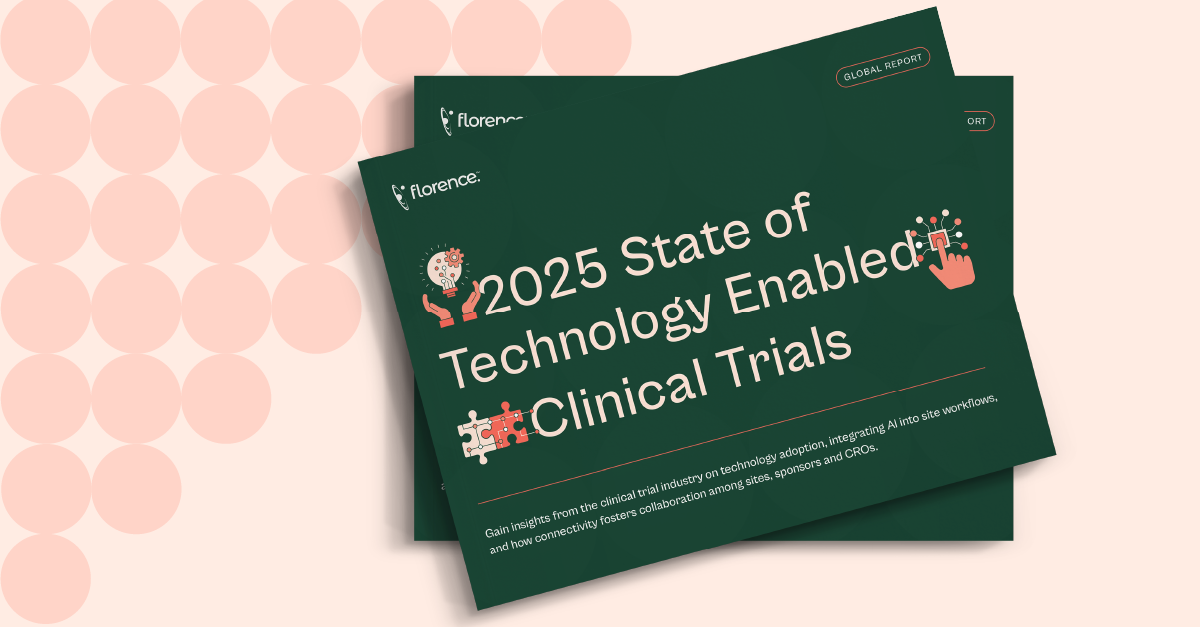Trends in Clinical Trials in 2025: Navigating a Transformative Landscape
By Catherine Gregor, Chief Clinical Trials Officer, Florence Healthcare
A confluence of political, technological, and economic forces will shape the clinical trial ecosystem in 2025. This change will be driven primarily by four factors: political shifts in the U.S., biopharma funding recovery and innovation, the rapid adoption of artificial intelligence (AI) in drug development, and the enduring challenges faced by global healthcare payers in ensuring equitable access to medicine. Collectively, these dynamics will facilitate faster, more accurate, and more cost-effective clinical research.
Political Uncertainty and Its Implications
Stakeholders across the healthcare spectrum are bracing for potential changes in regulatory and funding priorities with the inauguration of a new administration. Historically, such transitions have introduced both opportunities and risks, as policies surrounding healthcare access, drug pricing, and research funding are renegotiated.
Medicaid, in particular, stands at a crossroads, with anticipated reforms that may significantly impact patient populations and, by extension, clinical trial recruitment efforts. Proposed cuts to Medicaid could reduce healthcare access for vulnerable populations, particularly in rural and underserved areas. This may result in a smaller pool of eligible participants for clinical trials, as many individuals rely on Medicaid for routine healthcare and chronic disease management—prerequisites for trial participation. Additionally, these cuts could exacerbate recruitment challenges in regions already classified as healthcare deserts, where access to medical facilities and trial sites is limited.
To mitigate these impacts, sponsors may need to implement innovative recruitment strategies, such as mobile clinics, community partnerships, and increased utilization of decentralized trial models, to reach Medicaid-dependent populations and ensure broader trial participation. The overall landscape of healthcare accessibility could evolve as these strategies drive greater efforts to prioritize equitable trial participation and address the gaps created by reduced Medicaid funding.
Biopharma Funding and M&A Activity
The life sciences sector is expected to witness a recovery in funding for early-stage biopharma companies, driven by several key factors. First, larger pharmaceutical firms are under increasing pressure to address looming patent cliffs, which threaten significant revenue streams. This urgency incentivizes investment in innovative therapies and emerging technologies. Additionally, with an influx of cash reserves held by these companies, there is a growing appetite for strategic acquisitions and partnerships to diversify portfolios and bridge innovation gaps.
The global focus on AI-driven drug development and the promise of accelerated timelines further bolster investor confidence, making early-stage biopharma ventures attractive targets. Together, these dynamics are likely to catalyze a resurgence in funding and reshape the innovation landscape in the sector. While M&A activity slowed in 2024 due to economic uncertainty, the imperative for larger pharmaceutical firms to address patent cliffs and pipeline gaps is likely to rekindle strategic acquisitions in 2025.
This consolidation may create opportunities to integrate advanced technologies into clinical trials by enabling companies to pool resources, share expertise, and adopt more cutting-edge technologies across their departments and portfolios. In turn, these technologies can streamline development by automating data management, optimizing trial designs, and enhancing the accuracy of patient recruitment processes. Furthermore, operational resource allocation will improve as larger, consolidated entities can more effectively distribute funding and infrastructure across global trial sites, ensuring better support for diverse and decentralized trials. This alignment of advanced technologies and strategic resources has the potential to significantly reduce costs, improve operational efficiency, and accelerate the time-to-market for new therapies.
The AI Revolution in Clinical Development
The most transformative trend in 2025 will likely be the accelerated adoption of AI in clinical trials. AI is already proving to be a game-changer, enabling faster trial timelines, improved accuracy, and significant cost savings. For example, AI-powered tools like deep learning algorithms have successfully optimized trial design by simulating diverse patient outcomes using synthetic data, reducing the time needed to finalize protocols. Additionally, predictive analytics platforms have demonstrated their ability to identify potential participants from electronic health records, thereby increasing recruitment efficiency and ensuring a more representative study population. These advancements not only minimize delays but also enhance the likelihood of trial success by aligning recruitment strategies with real-world demographic and health data.
Moreover, generative AI is emerging as a pivotal tool for compliance and inspection readiness. For example, self-analyzing trial master files (TMFs) can preemptively flag inconsistencies or regulatory risks, while AI co-pilots during inspections provide real-time insights and document retrieval. These innovations not only enhance operational efficiency but also strengthen regulatory compliance, reducing the risk of costly delays.
Equitable Access and Global Challenges
Despite these technological advancements, global healthcare systems face persistent challenges in ensuring equitable access to clinical trials. Healthcare deserts, particularly in rural and underserved urban areas, remain a significant barrier. Addressing these disparities will require innovative trial models, such as decentralized and virtual trials, which leverage telehealth and remote monitoring technologies to reach a broader patient demographic.
Additionally, global regulatory changes—including new requirements for data anonymization and plain language summaries—demand adaptive strategies from sponsors. The integration of AI-driven tools to navigate these complexities will be essential for maintaining compliance and fostering inclusivity in trial participation.
The Path Forward
If 2025 unfolds as anticipated, the clinical trial landscape will be marked by:
- Faster Timelines: AI-powered workflows and real-world data integration will shorten trial durations, accelerating the delivery of new therapies.
- Improved Accuracy: Advanced analytics and larger datasets will enhance the precision and relevance of trial outcomes, driving more effective treatments.
- Cost-Effective Research: Streamlined trial designs and efficient recruitment methods will reduce overall costs, potentially lowering treatment expenses for patients.
- Enhanced Accessibility: Decentralized trial models and innovative technologies will bridge gaps in access, addressing long-standing inequities in healthcare.
Clinical trial ecosystems in 2025 will be more agile, inclusive, and innovative as these trends converge. In adapting to these changes, stakeholders can navigate present uncertainties while building a solid foundation for the future.
Stay Ahead in Clinical Research
Discover the key trends shaping the future of clinical trials in the 2025 State of Technology Enabled Clinical Trials Report. From AI innovations to collaboration breakthroughs, this industry-leading report equips you with the insights to lead the next wave of innovation.


